In 1999, the Atlanta BeltLine was first proposed in a graduate thesis by Georgia Tech student Ryan Gravel. The idea was to connect multiple neighborhoods within Atlanta with one long trail that would be built over old Atlanta train rail corridors, and in 2006, the Atlanta BeltLine Inc. (ABI) was formed to begin planning the construction of the project. By 2008, the first section of the trail was finished in Atlanta’s Old Fourth Ward and the vision of Gravel to create a more walkable and social urban environment for Atlanta was on its way to being completed. Since then, however, some have began to argue that the BeltLine isn’t quite serving the purpose that it originally intended, and in September of 2016, Gravel resigned from the board of the Atlanta BeltLine Partnership because he argued that the BeltLine wasn’t being built in a way that benefited the people around it. In the beginning, the BeltLine was intended to be a way to bring the people of Atlanta together by creating a more comfortable social environment for them to live in, but as the years have gone by, the BeltLine has had some negative effects on the built environment of Atlanta by becoming a catalyst for gentrification in the Old Fourth Ward district of Atlanta.
Since the completion of the West End trail, which is still the only section to be completed, the BeltLine has become a popular spot for a lot of citizens of Atlanta as well as tourists, and it has brought a lot of new developments with it as well like Ponce City Market and Historic Fourth Ward Park. All of these new developments have had the same kind of impact on Old Fourth Ward, and all of them are situated very similarly relative to the area by lying on the perimeter of the district. Additionally, a lot of these effects have been extremely positive, like Gravel intended. For example, the BeltLine has, in fact, created a more walkable and social environment for Atlanta, and the projects have actually been pretty inventive in their uses of urban renewal. However, whether or not the BeltLine has affected the actual population of Old Fourth Ward in a positive way is debatable. Like Alex Cummings said in his article “Is the BeltLine Bad for Atlanta?”, “Class has always been the shadow cast by New Urbanism”, and I think this is exactly the case for Old Fourth Ward.
I recently saw an article on the National Geographic website titled “10 Reasons to Love Atlanta’s Old Fourth Ward”, and while reading their list, I found it a little aggravating that the number one reason to visit O4W, a district so rich in African American history and culture, was Ponce City Market, a very new site that can barely be counted as a part of O4W because of how far it sits from the heart of the district. The number three spot on their list was the BeltLine, and all the way down at number nine was the history of O4W. I feel that developments like the BeltLine and Ponce City market, by affiliating themselves so heavily with O4W, are actually detracting from the historical importance of the district by drawing the middle to upper class attention to themselves, and I think that travel articles like this one really prove that.
O4W has historically been a lower class, African American neighborhood, and when taking that into consideration, some of the techniques used by ABI to get the BeltLine made can start to seem less than moral. For example, the BeltLine is funding itself by using something called a tax-allocation district (TAD) bond. A TAD bond is when a district uses the expected revenue increase to be caused by rising property values to pay for renovations to that area, so basically, the BeltLine is considered a renovation to Atlanta due to the initial community support of the project and is dependant upon rising property values in order to complete its construction. Like Cummings points out in his article, “TAD-funded development remains risky, given that it mortgages current development on fantasies of future growth. It is like getting a home loan not on the basis of your current income, but a raise you think you might get a couple of years from now”. He also points out that “it also makes clear that the intent of the project is expressly to raise property values-the central driver of gentrification.” Basically, the BeltLine is a gentrification machine. It’s clear just by observing the area around the BeltLine and Ponce City Market that property values are definitely increasing because of all the new apartment complexes being built around them, cutting the developments off from the lower income majority space of Old Fourth Ward. Citizens of Old Fourth Ward argue that instead of using the TAD to fund transportation projects linked to things like the BeltLine, which mainly benefit higher income individuals, the money should instead go to improve things like MARTA, which a lot of lower income Atlanta citizens rely on for transportation.
When Ryan Gravel left the Atlanta BeltLine Partnership, he wrote in a letter to the board saying, “The recent announcement of $7.5 million from TAD bonds… will likely support fewer than 200 affordable units out of ABI’s obligation to 5,600 – it is a drop in the bucket when compared to the need.” By posting his resignation letter on his website, Gravel informed his readers that when he was first planning the BeltLine, he was aware of the changes that would come to lower income districts of Atlanta due to things like the TAD bonds, but he also let them know that ABI had a plan to counter the rising property values with an obligation to at least 5,600 affordable housing units around the BeltLine. A promise like that is one that would definitely counter the gentrification catalyst of the BeltLine. Now, instead of planning to cater to the residents of Old Fourth Ward, quite the opposite is happening. In the article “BeltLine Is No Home to Homeless”, Thomas Wheatley describes the story of a homeless man named Sammy who has lived in the area that the BeltLine is being built on for more than 30 years. In the article, Sammy describes how he’s seen many of his homeless friends forced to leave not only by the police who patrol the area, but because the area just has too many people now who make it noisy and uncomfortable for Sammy, and that’s exactly what gentrification is.
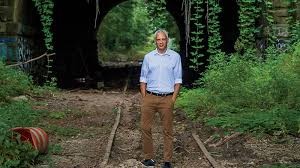 (Gravel standing on BeltLine site)
(Gravel standing on BeltLine site)
Most of the problems simply come down to property values as a catalyst for gentrification, and I think that in order for projects like the BeltLine to work, that problem needs to be taken care of. I completely understand the good intentions behind the BeltLine, but I also understand that major decisions regarding the changing of the built environment of a city will have major impacts, either good or bad, on everyone that lives there. However, I do think that if the problem of high property values could be fixed or if programs could be implemented to help lower income citizens afford to stay in O4W then the BeltLine and similar projects could work with nowhere near as many negative effects on the social environment. Projects like the affordable housing program that Gravel spoke about in his letter could greatly change the BeltLine’s impact on Old Fourth Ward. Plus, projects like that are already being used further inside the boundaries of O4W. Take the City Lights Project for example. City Lights is a project which aims at creating housing units for low-income seniors, and it’s worked, which is proof that a change can be made to make the BeltLine’s construction less impactful on lower income citizens.
Another problem that I see with the BeltLine is actually where it’s located. It lies directly on the border of Old Fourth Ward, and I think that this fact actually adds to the gentrification by creating a high income border around the district. O4W is now locked between gentrifying projects like the BeltLine and the interstate, which secludes O4W from the rest of Downtown Atlanta. If projects like the BeltLine keep growing with no action to help lower income citizens, the gentrifying agents could grow inward into O4W and could successfully gentrify a lot more of the district.
The BeltLine, as well as other Urban renewal projects, always start with good intentions, but somewhere along the way, those intentions can be morphed into something that creates negativity. I believe that it’s up to the people who live in O4W to stop this, but I’m not implying that Old Fourth Ward has a weak local community because they’ve proven time and time again that they do, in fact, care for the state of their neighborhood. Just look at things like the Old Fourth Ward Arts Festival or Sweet Auburn Springfest. The community pride in Old Fourth Ward is definitely stronger than other places in Atlanta, and how could it not be? Old Fourth Ward has had such a large historical impact on the development of Atlanta, the south, and even the United States by being a major location for the civil rights movement. Ultimately, I think that things will turn out alright for O4W, but before things can begin to improve, the problems need to be pointed out.
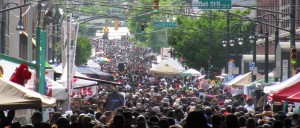 (Crowd at Sweet Auburn Springfest)
(Crowd at Sweet Auburn Springfest)
Sources:
Eubanks, Caroline. “10 Reasons to Love Atlanta’s Old Fourth Ward.” Intelligent Travel, June 30, 2014. http://intelligenttravel.nationalgeographic.com/2014/06/30/10-reasons-to-love-atlantas-old-fourth-ward/.
Hensley, Ellie. “Are Things Moving Too Quickly in the Old Fourth Ward?” Atlanta Business Chronicle. Accessed November 13, 2016. http://www.bizjournals.com/atlanta/print-edition/2015/11/06/are-things-moving-too-quickly-in-the-old-fourth.html.
Wheatley, Thomas. “Beltline Is No Home to Homeless.” Creative Loafing Atlanta. Accessed November 13, 2016. http://www.clatl.com/news/article/13062620/beltline-is-no-home-to-homeless.
Green, Josh. “Could New Apartments Be Catalyst For Boulevard Change?” Curbed Atlanta, June 4, 2013. http://atlanta.curbed.com/2013/6/4/10236992/could-new-apartments-be-catalyst-for-boulevard-change.
Henry, Scott. “Down on Boulevard: Positive Change Might Finally Come to Atlanta’s Lawless Street.” Creative Loafing Atlanta. Accessed October 10, 2016. http://www.clatl.com/news/article/13029755/down-on-boulevard-positive-change-might-finally-come-to-atlanta146s-lawless-street.
Gravel, Ryan. “FAQ > Why Did You Leave the ABP Board?” Ryangravel, September 27, 2016. https://ryangravel.com/2016/09/27/faq-why-did-you-leave-the-abp-board/.
Cummings, Alex Sayf. “Is the Beltline Bad for Atlanta?” Tropics of Meta, April 9, 2012. https://tropicsofmeta.wordpress.com/2012/04/09/is-the-beltline-bad-for-atlanta/.
“Project History // Atlanta BeltLine.” Accessed December 11, 2016. http://beltline.org/progress/progress/project-history/.
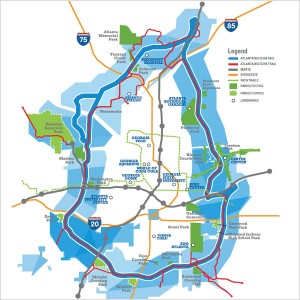
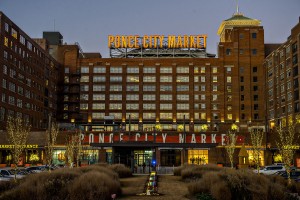
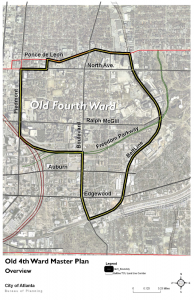
Leave a Reply